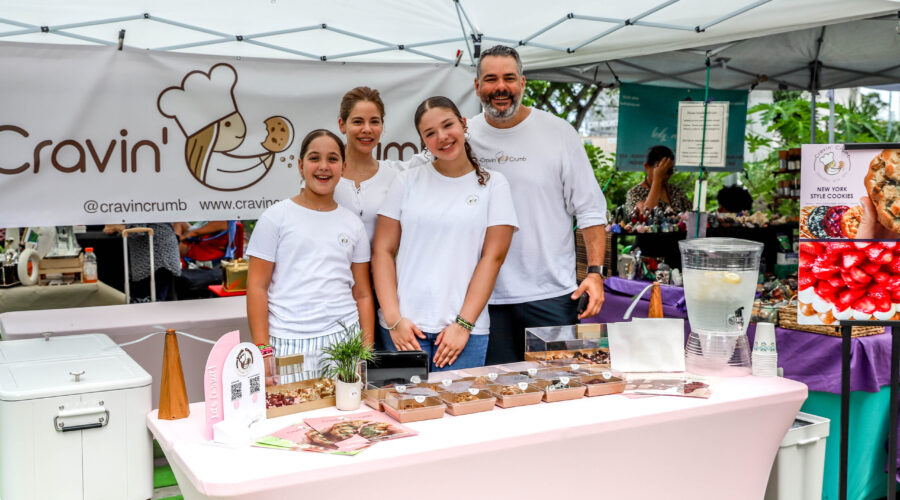Maximizing Vendor Revenue: Pricing Models & Upsell Techniques
Introduction
For vendors at farmers markets, festivals, and pop-up events, revenue isn’t just about foot traffic—it’s about smart pricing and strategic upselling. Whether you sell organic vegetables, handcrafted soaps, or gourmet street tacos, the way you price your offerings and present add-ons can dramatically boost your profitability. In this comprehensive guide, we’ll explore:
- Key Pricing Models used by successful vendors
- Upsell & Cross-Sell Techniques that delight customers
- Bundling Strategies to increase average purchase value
- Limited-Time Offers & Dynamic Pricing tactics
- Case Studies from profitable Unite Worldwide vendors
- Step-by-Step Pricing & Upsell Checklist
Implement these proven methods to maximize your revenue, enhance customer satisfaction, and build a thriving vendor business.
1. Key Pricing Models for Market Vendors
Choosing the right pricing model affects customer perception and sales volume. Below are five popular approaches:
A. Cost-Plus Pricing
Definition: Calculate your total cost (ingredients, labor, booth fees, packaging) and add a predetermined markup (e.g., 30–50%).
Pros: Ensures all costs covered; transparent profit margin.
Cons: Doesn’t account for customer willingness to pay; may underprice premium items.
B. Value-Based Pricing
Definition: Price based on perceived value to the customer (e.g., artisan cheese plate vs. generic cheese).
Pros: Captures maximum willingness to pay; aligns price with brand reputation.
Cons: Requires deep market understanding and customer education.
C. Tiered Pricing
Definition: Offer multiple versions at different price points (e.g., small, medium, large herb bundles).
Pros: Appeals to budget-conscious and premium buyers; upsell from entry to mid-tier options.
Cons: Inventory complexity; requires clear differentiation.
D. Dynamic Pricing
Definition: Adjust prices in real-time based on demand, inventory, or external factors (e.g., peak hours, slow days).
Pros: Maximizes revenue during high demand; moves slow-selling items.
Cons: Can confuse customers if not communicated clearly; requires tracking tools.
E. Subscription & Subscription Box Models
Definition: Offer recurring deliveries or pick-up boxes (weekly produce baskets, monthly soap assortments).
Pros: Predictable revenue; builds customer loyalty.
Cons: Requires reliable logistics and inventory forecasting.
2. Upsell & Cross-Sell Techniques
Once customers are engaged, upselling and cross-selling encourage larger baskets:
A. Complementary Add-Ons
- Example: At a bakery stall, offer “Would you like a gourmet jam or honey pairing with that scone?”
- Tip: Position add-ons near the checkout; use small signage highlighting bundle deals.
B. Volume Discounts
- Example: “Buy 3 bar soaps, get the 4th free” or “Three jars of jam for $20 (regularly $27).”
- Tip: Clearly display unit price savings; limit to encourage impulse bulk buys.
C. Limited-Time Offers
- Example: “Today only: add a flavored olive oil for $5 (regularly $8).”
- Tip: Create urgency with bold signage and friendly verbal reminders.
D. Premium Upgrades
- Example: At a coffee truck, offer a “gourmet milk upgrade” (almond, oat, or macadamia) for an extra $1.
- Tip: Train staff to suggest upgrades when order is placed.
E. Bundled Packages
- Example: “Fresh salad mix + microgreens + herb bundle” packaged at a 10% discount versus individual purchase.
- Tip: Pre-package bundles with attractive wrap to simplify customer choice.
3. Bundling Strategies to Increase Cart Size
Bundles package high-margin and popular items together:
A. Built-In Margins
- Combine a high-margin item (e.g., handcrafted soap) with a lower-margin, popular item (e.g., lip balm) at a slight discount.
B. Themed Bundles
- Seasonal: “Summer BBQ kit” with spice rubs, grilling oil, and decorative skewers.
- Gift-Ready: “Hostess gift pack” with candles, small potted herb, and artisanal chocolate.
C. Tiered Bundles
- Silver, Gold, Platinum: Three bundle levels that cater to varied budgets and gift needs.
External Link: For best practices on product bundling, see Shopify’s guide .
4. Limited-Time Offers & Dynamic Pricing
Harness scarcity and market conditions:
A. Flash Sales
- Announce 15-minute “pop-up discounts” via social media while at market.
B. Peak Hour Pricing
- Slightly higher during busy lunchtime or early evening; communicate transparently.
C. Slow Day Incentives
- Offer “happy hour” pricing in the last hour of market to clear inventory.
External Link: Learn about dynamic pricing for small businesses .
5. Case Studies from Unite Worldwide Vendors
Case Study A: SweetMaria’s Bakeshop
- Model: Tiered pricing + seasonal bundles (holiday cookie tins).
- Result: 35% increase in average order value during holiday season.
Case Study B: TropicalJuice Co.
- Model: Upsell smoothies with boost shots (spirulina, protein) at $2 each.
- Result: Boost shot add-on rate of 40%, driving 20% revenue growth.
Case Study C: BohoRootz Textiles
- Model: Subscription tie-dye kits (DIY home workshops).
- Result: 50 recurring customers per month, 25% higher LTV than walk-in sales.
6. Step-by-Step Pricing & Upsell Checklist
- Audit Costs & Margins: Calculate true cost per item, including overhead.
- Select Primary Pricing Model: Cost-plus, value-based, tiered, or subscription.
- Identify Upsell Opportunities: List 3–5 complementary or premium offers.
- Design Bundles: Create themed and tiered packages.
- Train Staff: Script friendly suggestions (“Customers also love…”).
- Implement Dynamic Pricing: Set rules for peak/off-peak adjustments.
- Monitor & Adjust: Track basket size, add-on attachment rates, and customer feedback monthly.
Internal Links:
- Access our Pricing Optimization Toolkit
- Book a Revenue Strategy Consultation
- Browse the Vendor Directory
- Join our Vendor Referral Program
Conclusion
Smart pricing and upselling aren’t manipulative—they enhance customer satisfaction by simplifying choices and offering value. By adopting the right pricing model, crafting irresistible bundles, and training staff in upsell techniques, vendors can significantly increase average transaction value and overall revenue. Combine these tactics with Unite Worldwide, Inc.’s expert resources—pricing toolkits, consultative support, and vendor portals—to build a profitable, sustainable market presence.
🚀 Ready to maximize your vendor revenue?
- Download our Pricing Optimization Toolkit
- Schedule a Revenue Strategy Consultation
- Explore our Vendor Directory
- Join our Vendor Community


